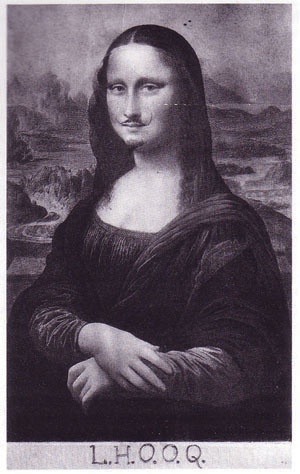 It is safe to say that the Mona Lisa, or La Gioconda, is the most famous painting in the world. Endlessly reproduced, endlessly parodied, it has taken on a life outside itself, as a tea towel, a t-shirt, an icon, and a meme.
It is safe to say that the Mona Lisa, or La Gioconda, is the most famous painting in the world. Endlessly reproduced, endlessly parodied, it has taken on a life outside itself, as a tea towel, a t-shirt, an icon, and a meme.
As early as 1919, Marcel Duchamp had made the famous image the subject of reinvention and mocking variation. He gave the famous lady a stylish little moustache and so his L.H.O.O.Q. became one of the first memes. But before 1911, hardly anybody had even heard of the Mona Lisa.
According to this essay, in the 1850s, Leonardo da Vinci, the very model of Renaissance genius, was held in relatively poor regard compared to his contemporaries Michelangelo and Raphael.
So what happened to make the Mona Lisa the most famous painting in the world?
It was stolen, that’s what. In 1911, Vincenzo Peruggia, a maintenance worker at the Louvre, walked out with the Mona Lisa under his smock. Paris was outraged. Crowds flocked to see the empty space where the painting had hung – in far greater numbers than had come to see the painting itself. It was the theft, the absence of the painting, that made it famous because – crucially – newspapers around the world began printing pictures of the stolen portrait. It had worldwide exposure and became instantly recognisable.
The theft also had the effect of making the Mona Lisa not just the most famous work of art in the world, but also a symbol of European culture. By the time it was recovered, two years later, its elevation from an obscurity to ubiquity had been complete. Duchamp’s mocking commentary on the picture would have been pointless without this.
So what does this tell us about your brand? Well, partly that it can take an accident of fate to make an image or a brand into a household name (but most likely it is a lot of hard work). But this is not Leonardo da Vinci’s story, it’s Marcel Duchamp’s: he was the one who saw the moment when La Gioconda became more than just a painting, and he capitalized on that moment, turning an icon into a brand.











